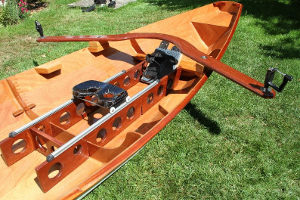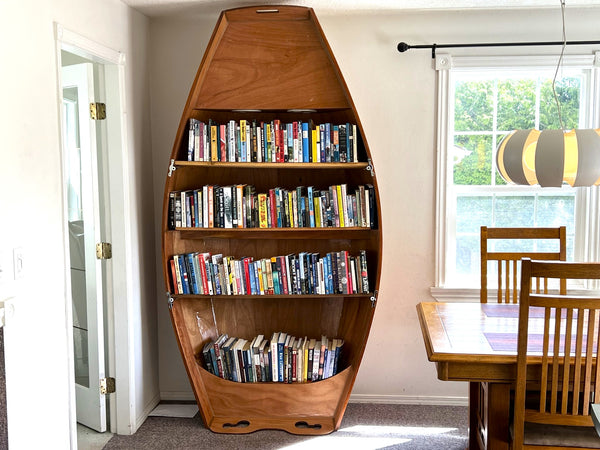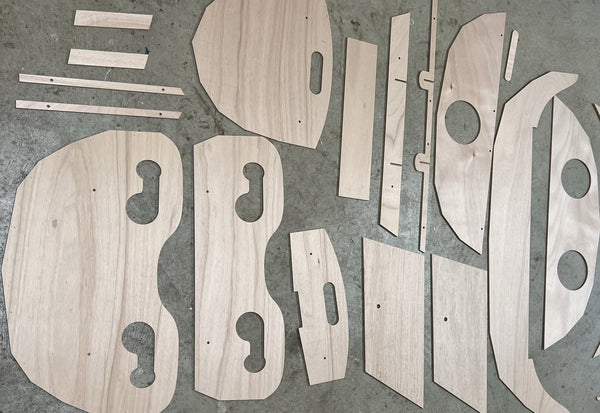Everything You Need to Know About Installing a Sliding Seat Rowing System
Sliding seat rowing is an efficient way to propel a boat, while providing a fantastic full-body workout. To enjoy the advantages of sliding seat rowing, however, it is important to install a properly-designed rowing system in your boat. For those new to the sport it can be a confusing process with many options available. We decided it was time to write an article clarifying the procedure for those wishing to outfit their vessels for sliding seat rowing.
Overview
 The purpose of a sliding seat system is to allow your leg muscles to be fully involved, allowing for more powerful strokes. In order to take full advantage of this benefit, it is important that the sliding seat, foot brace, oarlocks, etc. are ideally positioned relative to one another to provide maximum efficiency and comfort. This aspect of the system is referred to as the “geometry”. We have written another article focusing specifically on rowing geometry which you can view here.
The purpose of a sliding seat system is to allow your leg muscles to be fully involved, allowing for more powerful strokes. In order to take full advantage of this benefit, it is important that the sliding seat, foot brace, oarlocks, etc. are ideally positioned relative to one another to provide maximum efficiency and comfort. This aspect of the system is referred to as the “geometry”. We have written another article focusing specifically on rowing geometry which you can view here.
Another important aspect is the type of hardware and components being used. It is important that friction in the system is minimized, otherwise the benefits are quickly lost.
What boats are suitable for sliding seat rowing?
 Before going to the work and expense of converting your boat for sculling (sliding seat rowing),you need to assess whether your boat is appropriate. Short vessels are not suitable for two reasons. Their waterline length restricts overall speed, so much of the extra horsepower is wasted. Additionally, short boats are more heavily affected by the movement of the rower on the sliding seat, causing the bow and stern to pitch up and down, which slows the boat. Generally, sliding seat rowboats should be at least 15’ in length. Wide and heavy boats don’t perform well either. Canoes and canoe-shaped boats make good rowing vessels. Slender long and light rowing boats such as our Oxford Wherry are ideal.
Before going to the work and expense of converting your boat for sculling (sliding seat rowing),you need to assess whether your boat is appropriate. Short vessels are not suitable for two reasons. Their waterline length restricts overall speed, so much of the extra horsepower is wasted. Additionally, short boats are more heavily affected by the movement of the rower on the sliding seat, causing the bow and stern to pitch up and down, which slows the boat. Generally, sliding seat rowboats should be at least 15’ in length. Wide and heavy boats don’t perform well either. Canoes and canoe-shaped boats make good rowing vessels. Slender long and light rowing boats such as our Oxford Wherry are ideal.
How to outfit your vessel for sliding seat rowing?
There are several options for installing sliding seat rowing systems:
Custom Design and Construction:
The framework for the sliding and oarlock supports can be custom built into your boat using existing boat structure (hull, frames, gunwales, etc) as part of the support. Third party components – sliding seat, tracks, oarlocks, foot supports, etc can then be installed. Be sure when designing the system to adhere to appropriate geometry. A good source for rowing components is Pocock, a rowing company based out of Washington . Items required are a seat, tracks, oarlocks, oarlock pins and a footstretcher. We don’t recommend using seats that use bushings for the wheels, as friction is significant. Instead ball bearings or double-action systems are ideal.Complete Drop in Unit:
 There are several companies that supply complete one-part sliding seat rowing units that can easily be installed and removed from the boat. The riggers, oarlocks, sliding seat and footstretcher are all affixed to a metal frame, and these units are compatible with many open boat designs. The advantage is simplicity and convenience, however, they are pricy. Base price is about $650 with another $100 -$200 for the various connector systems. Chesapeake Light Craft and Alden are both good sources for drop in units.
There are several companies that supply complete one-part sliding seat rowing units that can easily be installed and removed from the boat. The riggers, oarlocks, sliding seat and footstretcher are all affixed to a metal frame, and these units are compatible with many open boat designs. The advantage is simplicity and convenience, however, they are pricy. Base price is about $650 with another $100 -$200 for the various connector systems. Chesapeake Light Craft and Alden are both good sources for drop in units.
Kit Drop in Unit:
 We’ve designed a simple drop-in unit that comes in kit form as an alternative to the complete drop-in units. It’s about half the cost, and half the weight, but does take about 12 hours to build. It includes all the components, hardware and plans/manual. The components provided are the same as those used by completive college rowers for robust and efficient performance. To learn more about this system, please visit our sliding seat page.
We’ve designed a simple drop-in unit that comes in kit form as an alternative to the complete drop-in units. It’s about half the cost, and half the weight, but does take about 12 hours to build. It includes all the components, hardware and plans/manual. The components provided are the same as those used by completive college rowers for robust and efficient performance. To learn more about this system, please visit our sliding seat page.
We don’t recommend trying to make home-made made components such as the seats and oarlocks. These items are finely honed for performance, and it is very challenging creating components that work as well as the commercial versions.
Once you’ve figured out the ideal sliding seat system for your boat, you’ll need to think about oars. It is important that appropriately-sized oars are used to make full use of the system. For more information on sculling oars, please visit our oar page.
Leave a comment
Comments will be approved before showing up.
Also in News

Human Powered Achievements through the Northwest Passage
At Angus Rowboats, our passion for adventure naturally draws us to the mystique of the Northwest Passage – one of the world's most captivating and perilous waterways. Historically, this elusive passage promised a shorter shipping route, spurring early navigators to fervently chart and struggle through its icy intricacies.
The summer of 2023 saw three audacious teams, including one using our very own RowCruiser boats, aiming to be the first to traverse NW Passage solely by human power within a single season. As the season concludes, we've chronicled these attempts, and catalogued past human-powered endeavors to navigate the Northwest Passage.

Creating a Bookcase from a Boat


Angus Rowboats
Author